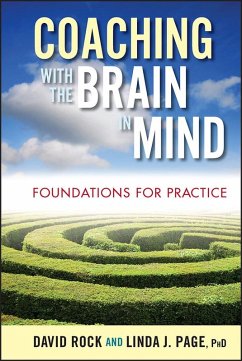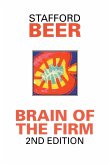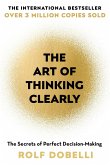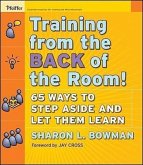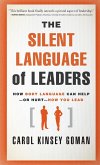David Rock (Australia Sydney), Linda J. Page (PhD, Adler International Learning, Toronto, Canada)
Coaching with the Brain in Mind
Foundations for Practice
David Rock (Australia Sydney), Linda J. Page (PhD, Adler International Learning, Toronto, Canada)
Coaching with the Brain in Mind
Foundations for Practice
- Gebundenes Buch
- Merkliste
- Auf die Merkliste
- Bewerten Bewerten
- Teilen
- Produkt teilen
- Produkterinnerung
- Produkterinnerung
By understanding how the brain works, coaches can tailor their coaching practice to be in alignment with a client's way of thinking and behaving. This book uses brain-based methods to enhance the coach-client relationship more effectively. It presents tools and methodologies that can be employed by anyone, with or without coaching experience.
Andere Kunden interessierten sich auch für
![Brain of the Firm Brain of the Firm]() Stafford BeerBrain of the Firm118,99 €
Stafford BeerBrain of the Firm118,99 €![The Art of Impossible The Art of Impossible]() Steven KotlerThe Art of Impossible12,99 €
Steven KotlerThe Art of Impossible12,99 €![The Art of Thinking Clearly The Art of Thinking Clearly]() Rolf DobelliThe Art of Thinking Clearly9,99 €
Rolf DobelliThe Art of Thinking Clearly9,99 €![Training from the Back of the Room! Training from the Back of the Room!]() Sharon L. BowmanTraining from the Back of the Room!58,99 €
Sharon L. BowmanTraining from the Back of the Room!58,99 €![The Silent Language of Leaders The Silent Language of Leaders]() Carol Kinsey GomanThe Silent Language of Leaders22,99 €
Carol Kinsey GomanThe Silent Language of Leaders22,99 €![The Three Laws of Performance The Three Laws of Performance]() Steve ZaffronThe Three Laws of Performance24,99 €
Steve ZaffronThe Three Laws of Performance24,99 €![The Heart of Enterprise The Heart of Enterprise]() Stafford BeerThe Heart of Enterprise120,99 €
Stafford BeerThe Heart of Enterprise120,99 €-
-
-
By understanding how the brain works, coaches can tailor their coaching practice to be in alignment with a client's way of thinking and behaving. This book uses brain-based methods to enhance the coach-client relationship more effectively. It presents tools and methodologies that can be employed by anyone, with or without coaching experience.
Hinweis: Dieser Artikel kann nur an eine deutsche Lieferadresse ausgeliefert werden.
Hinweis: Dieser Artikel kann nur an eine deutsche Lieferadresse ausgeliefert werden.
Produktdetails
- Produktdetails
- Verlag: John Wiley & Sons Inc
- Seitenzahl: 544
- Erscheinungstermin: 11. September 2009
- Englisch
- Abmessung: 241mm x 161mm x 40mm
- Gewicht: 818g
- ISBN-13: 9780470405680
- ISBN-10: 0470405686
- Artikelnr.: 26217194
- Herstellerkennzeichnung
- Libri GmbH
- Europaallee 1
- 36244 Bad Hersfeld
- gpsr@libri.de
- Verlag: John Wiley & Sons Inc
- Seitenzahl: 544
- Erscheinungstermin: 11. September 2009
- Englisch
- Abmessung: 241mm x 161mm x 40mm
- Gewicht: 818g
- ISBN-13: 9780470405680
- ISBN-10: 0470405686
- Artikelnr.: 26217194
- Herstellerkennzeichnung
- Libri GmbH
- Europaallee 1
- 36244 Bad Hersfeld
- gpsr@libri.de
DAVID ROCK is one of the thought leaders in the global coaching profession. He has taught his integrated coaching model to more than 3,000 coaches and managers worldwide. His coaching organization, Results Coaching Systems, works with large corporations to build internal coaching competencies among managers and leaders. He is the author, most recently, of Quiet Leadership: Six Steps to Transforming Performance at Work. LINDA J.PAGE,PhD, is founder of Adler International Learning, a coach training and consulting organization, and active member of several international coaching organizations. Her writing and editing experience spans various media, genres, and subjects, including articles on coaching, neuroscience, organizational change, and psychotherapy. She has also written scripts for CBC radio and for several children's albums including Big Bird and Oscar the Grouch: Camping in Canada.
Preface: Who Should Read This Book? xiii
About the Authors xix
About This Book xxiii
Knowledge and Action, Action and Knowledge xxv
Acknowledgments xxvii
Introduction: What Are the Questions? 1
Coaching Bedrock 3
Coaching Pillars 7
Neuroscience Platform 13
Organization of Coaching with the Brain in Mind 15
What Do We Need to Know About Neuroscience? 18
What Are We Doing Here? 27
A Note about the Science of Neuroscience 28
Part I: Who Are We?
Chapter 1 Bedrock-Ontology 33
Western Philosophy 35
New Age Philosophy 41
Anthropology 44
Sociology 50
Ontology as Bedrock for Coaching 53
Chapter 2 Pillar-Social Embeddedness 55
Globalization 57
Systems Theory 65
Quantum Theory 86
Social Embeddedness as a Coaching Pillar 89
Chapter 3 Neuroscience Platform-Mindfulness 91
The Potentiating Brain 94
Thinking Processes 102
Mindfulness Practices 108
Practice Guide for Coaching with the Brain in Mind-Know Yourself 113
Part II: How Can We be Healthy?
Chapter 4 Bedrock-Health Practices 117
Western Medicine 119
Physiology 124
Stress 134
Wellness Theory 136
Resource Section: How to Recognize and Avoid Unsupported Claims of Health
Benefits 140
Health Practices as Bedrock for Coaching 141
Chapter 5 Pillar-Optimizing Performance 143
Sports Psychology 145
Change Theory 149
Models of Change 155
Optimizing Performance as a Coaching Pillar 169
Chapter 6 Neuroscience Platform-Neuroplasticity 171
Dynamic Stability 173
Placebo Effect 174
Experience and Hardwiring 178
Attention 178
Veto Power 183
Applying the Schwartz-Rock Formula for Dynamic Stability 186
Practice Guide for Coaching with the Brain in Mind-Leverage Change 188
Part III: Why Do We Do What We Do?
Chapter 7 Bedrock-Psychology 191
Behaviorism 194
Psychometrics 199
Developmental Psychology 206
Evolutionary Psychology 209
Psychology as Bedrock for Coaching 215
Chapter 8 Pillar-Activating the Mind 217
Cognitive Psychology 219
Learning Theory 223
Activating the Mind as a Coaching Pillar 243
Chapter 9 Neuroscience Platform-Cognition 245
Memory 247
Awareness 256
Mapping and Predicting 259
Dilemma Model 267
Practice Guide for Coaching with the Brain in Mind-Make Decisions and Solve
Problems 271
Part IV: How Can We Feel Better?
Chapter 10 Bedrock-Psychotherapy 275
Humanistic Movement 284
Trauma and Its Social Implications 287
Research Revealing Transtheoretic Common Factors 288
Linking Psychotherapy Techniques to Coaching 290
Resource Section: Mental Health Issues-How Not to Do Psychotherapy 316
Psychotherapy as Bedrock for Coaching 320
Chapter 11 Pillar-Accentuate the Positive 323
Learned Optimism 327
Science of Happiness: Pleasure, Engagement, and Meaning 331
Resilience 338
Emotional Intelligence 340
Accentuate the Positive as a Pillar for Coaching 343
Chapter 12 Neuroscience Platform-Emotions 345
State of Mind 348
Scanning for Threats 351
Status and Belonging 356
Emotion Regulation 358
Practice Guide for Coaching with the Brain in Mind-Keep Cool Under Pressure
365
Part V: How Can We Get Along?
Chapter 13 Bedrock-Management 371
Management Theory 377
Industrial/Organizational Psychology 381
Social Psychology 383
Meta-analysis 390
Management as Bedrock for Coaching 395
Chapter 14 Pillar-Leadership 397
Organizational Heresies 400
Social Network Theories 407
Family Systems Therapies 411
Appreciative Inquiry 414
Human Capital Movement 417
Leadership as a Coaching Pillar 418
Chapter 15 Neuroscience Platform-NeuroLeadership 421
Collaborative, Contingent Conversations 423
Our Social Brains 426
Theory of Mind 431
Repairing Relationships-Sange 434
Resolving Conflict-Stop and Grow 440
Calming Threats-The SCARF Model 443
Practice Guide for Coaching with the Brain in Mind-Get Along with Others
447
Conclusion: What Are We Doing Here? 449
Internet Links 459
References 461
Index 487
About the Authors xix
About This Book xxiii
Knowledge and Action, Action and Knowledge xxv
Acknowledgments xxvii
Introduction: What Are the Questions? 1
Coaching Bedrock 3
Coaching Pillars 7
Neuroscience Platform 13
Organization of Coaching with the Brain in Mind 15
What Do We Need to Know About Neuroscience? 18
What Are We Doing Here? 27
A Note about the Science of Neuroscience 28
Part I: Who Are We?
Chapter 1 Bedrock-Ontology 33
Western Philosophy 35
New Age Philosophy 41
Anthropology 44
Sociology 50
Ontology as Bedrock for Coaching 53
Chapter 2 Pillar-Social Embeddedness 55
Globalization 57
Systems Theory 65
Quantum Theory 86
Social Embeddedness as a Coaching Pillar 89
Chapter 3 Neuroscience Platform-Mindfulness 91
The Potentiating Brain 94
Thinking Processes 102
Mindfulness Practices 108
Practice Guide for Coaching with the Brain in Mind-Know Yourself 113
Part II: How Can We be Healthy?
Chapter 4 Bedrock-Health Practices 117
Western Medicine 119
Physiology 124
Stress 134
Wellness Theory 136
Resource Section: How to Recognize and Avoid Unsupported Claims of Health
Benefits 140
Health Practices as Bedrock for Coaching 141
Chapter 5 Pillar-Optimizing Performance 143
Sports Psychology 145
Change Theory 149
Models of Change 155
Optimizing Performance as a Coaching Pillar 169
Chapter 6 Neuroscience Platform-Neuroplasticity 171
Dynamic Stability 173
Placebo Effect 174
Experience and Hardwiring 178
Attention 178
Veto Power 183
Applying the Schwartz-Rock Formula for Dynamic Stability 186
Practice Guide for Coaching with the Brain in Mind-Leverage Change 188
Part III: Why Do We Do What We Do?
Chapter 7 Bedrock-Psychology 191
Behaviorism 194
Psychometrics 199
Developmental Psychology 206
Evolutionary Psychology 209
Psychology as Bedrock for Coaching 215
Chapter 8 Pillar-Activating the Mind 217
Cognitive Psychology 219
Learning Theory 223
Activating the Mind as a Coaching Pillar 243
Chapter 9 Neuroscience Platform-Cognition 245
Memory 247
Awareness 256
Mapping and Predicting 259
Dilemma Model 267
Practice Guide for Coaching with the Brain in Mind-Make Decisions and Solve
Problems 271
Part IV: How Can We Feel Better?
Chapter 10 Bedrock-Psychotherapy 275
Humanistic Movement 284
Trauma and Its Social Implications 287
Research Revealing Transtheoretic Common Factors 288
Linking Psychotherapy Techniques to Coaching 290
Resource Section: Mental Health Issues-How Not to Do Psychotherapy 316
Psychotherapy as Bedrock for Coaching 320
Chapter 11 Pillar-Accentuate the Positive 323
Learned Optimism 327
Science of Happiness: Pleasure, Engagement, and Meaning 331
Resilience 338
Emotional Intelligence 340
Accentuate the Positive as a Pillar for Coaching 343
Chapter 12 Neuroscience Platform-Emotions 345
State of Mind 348
Scanning for Threats 351
Status and Belonging 356
Emotion Regulation 358
Practice Guide for Coaching with the Brain in Mind-Keep Cool Under Pressure
365
Part V: How Can We Get Along?
Chapter 13 Bedrock-Management 371
Management Theory 377
Industrial/Organizational Psychology 381
Social Psychology 383
Meta-analysis 390
Management as Bedrock for Coaching 395
Chapter 14 Pillar-Leadership 397
Organizational Heresies 400
Social Network Theories 407
Family Systems Therapies 411
Appreciative Inquiry 414
Human Capital Movement 417
Leadership as a Coaching Pillar 418
Chapter 15 Neuroscience Platform-NeuroLeadership 421
Collaborative, Contingent Conversations 423
Our Social Brains 426
Theory of Mind 431
Repairing Relationships-Sange 434
Resolving Conflict-Stop and Grow 440
Calming Threats-The SCARF Model 443
Practice Guide for Coaching with the Brain in Mind-Get Along with Others
447
Conclusion: What Are We Doing Here? 449
Internet Links 459
References 461
Index 487
Preface: Who Should Read This Book? xiii
About the Authors xix
About This Book xxiii
Knowledge and Action, Action and Knowledge xxv
Acknowledgments xxvii
Introduction: What Are the Questions? 1
Coaching Bedrock 3
Coaching Pillars 7
Neuroscience Platform 13
Organization of Coaching with the Brain in Mind 15
What Do We Need to Know About Neuroscience? 18
What Are We Doing Here? 27
A Note about the Science of Neuroscience 28
Part I: Who Are We?
Chapter 1 Bedrock-Ontology 33
Western Philosophy 35
New Age Philosophy 41
Anthropology 44
Sociology 50
Ontology as Bedrock for Coaching 53
Chapter 2 Pillar-Social Embeddedness 55
Globalization 57
Systems Theory 65
Quantum Theory 86
Social Embeddedness as a Coaching Pillar 89
Chapter 3 Neuroscience Platform-Mindfulness 91
The Potentiating Brain 94
Thinking Processes 102
Mindfulness Practices 108
Practice Guide for Coaching with the Brain in Mind-Know Yourself 113
Part II: How Can We be Healthy?
Chapter 4 Bedrock-Health Practices 117
Western Medicine 119
Physiology 124
Stress 134
Wellness Theory 136
Resource Section: How to Recognize and Avoid Unsupported Claims of Health
Benefits 140
Health Practices as Bedrock for Coaching 141
Chapter 5 Pillar-Optimizing Performance 143
Sports Psychology 145
Change Theory 149
Models of Change 155
Optimizing Performance as a Coaching Pillar 169
Chapter 6 Neuroscience Platform-Neuroplasticity 171
Dynamic Stability 173
Placebo Effect 174
Experience and Hardwiring 178
Attention 178
Veto Power 183
Applying the Schwartz-Rock Formula for Dynamic Stability 186
Practice Guide for Coaching with the Brain in Mind-Leverage Change 188
Part III: Why Do We Do What We Do?
Chapter 7 Bedrock-Psychology 191
Behaviorism 194
Psychometrics 199
Developmental Psychology 206
Evolutionary Psychology 209
Psychology as Bedrock for Coaching 215
Chapter 8 Pillar-Activating the Mind 217
Cognitive Psychology 219
Learning Theory 223
Activating the Mind as a Coaching Pillar 243
Chapter 9 Neuroscience Platform-Cognition 245
Memory 247
Awareness 256
Mapping and Predicting 259
Dilemma Model 267
Practice Guide for Coaching with the Brain in Mind-Make Decisions and Solve
Problems 271
Part IV: How Can We Feel Better?
Chapter 10 Bedrock-Psychotherapy 275
Humanistic Movement 284
Trauma and Its Social Implications 287
Research Revealing Transtheoretic Common Factors 288
Linking Psychotherapy Techniques to Coaching 290
Resource Section: Mental Health Issues-How Not to Do Psychotherapy 316
Psychotherapy as Bedrock for Coaching 320
Chapter 11 Pillar-Accentuate the Positive 323
Learned Optimism 327
Science of Happiness: Pleasure, Engagement, and Meaning 331
Resilience 338
Emotional Intelligence 340
Accentuate the Positive as a Pillar for Coaching 343
Chapter 12 Neuroscience Platform-Emotions 345
State of Mind 348
Scanning for Threats 351
Status and Belonging 356
Emotion Regulation 358
Practice Guide for Coaching with the Brain in Mind-Keep Cool Under Pressure
365
Part V: How Can We Get Along?
Chapter 13 Bedrock-Management 371
Management Theory 377
Industrial/Organizational Psychology 381
Social Psychology 383
Meta-analysis 390
Management as Bedrock for Coaching 395
Chapter 14 Pillar-Leadership 397
Organizational Heresies 400
Social Network Theories 407
Family Systems Therapies 411
Appreciative Inquiry 414
Human Capital Movement 417
Leadership as a Coaching Pillar 418
Chapter 15 Neuroscience Platform-NeuroLeadership 421
Collaborative, Contingent Conversations 423
Our Social Brains 426
Theory of Mind 431
Repairing Relationships-Sange 434
Resolving Conflict-Stop and Grow 440
Calming Threats-The SCARF Model 443
Practice Guide for Coaching with the Brain in Mind-Get Along with Others
447
Conclusion: What Are We Doing Here? 449
Internet Links 459
References 461
Index 487
About the Authors xix
About This Book xxiii
Knowledge and Action, Action and Knowledge xxv
Acknowledgments xxvii
Introduction: What Are the Questions? 1
Coaching Bedrock 3
Coaching Pillars 7
Neuroscience Platform 13
Organization of Coaching with the Brain in Mind 15
What Do We Need to Know About Neuroscience? 18
What Are We Doing Here? 27
A Note about the Science of Neuroscience 28
Part I: Who Are We?
Chapter 1 Bedrock-Ontology 33
Western Philosophy 35
New Age Philosophy 41
Anthropology 44
Sociology 50
Ontology as Bedrock for Coaching 53
Chapter 2 Pillar-Social Embeddedness 55
Globalization 57
Systems Theory 65
Quantum Theory 86
Social Embeddedness as a Coaching Pillar 89
Chapter 3 Neuroscience Platform-Mindfulness 91
The Potentiating Brain 94
Thinking Processes 102
Mindfulness Practices 108
Practice Guide for Coaching with the Brain in Mind-Know Yourself 113
Part II: How Can We be Healthy?
Chapter 4 Bedrock-Health Practices 117
Western Medicine 119
Physiology 124
Stress 134
Wellness Theory 136
Resource Section: How to Recognize and Avoid Unsupported Claims of Health
Benefits 140
Health Practices as Bedrock for Coaching 141
Chapter 5 Pillar-Optimizing Performance 143
Sports Psychology 145
Change Theory 149
Models of Change 155
Optimizing Performance as a Coaching Pillar 169
Chapter 6 Neuroscience Platform-Neuroplasticity 171
Dynamic Stability 173
Placebo Effect 174
Experience and Hardwiring 178
Attention 178
Veto Power 183
Applying the Schwartz-Rock Formula for Dynamic Stability 186
Practice Guide for Coaching with the Brain in Mind-Leverage Change 188
Part III: Why Do We Do What We Do?
Chapter 7 Bedrock-Psychology 191
Behaviorism 194
Psychometrics 199
Developmental Psychology 206
Evolutionary Psychology 209
Psychology as Bedrock for Coaching 215
Chapter 8 Pillar-Activating the Mind 217
Cognitive Psychology 219
Learning Theory 223
Activating the Mind as a Coaching Pillar 243
Chapter 9 Neuroscience Platform-Cognition 245
Memory 247
Awareness 256
Mapping and Predicting 259
Dilemma Model 267
Practice Guide for Coaching with the Brain in Mind-Make Decisions and Solve
Problems 271
Part IV: How Can We Feel Better?
Chapter 10 Bedrock-Psychotherapy 275
Humanistic Movement 284
Trauma and Its Social Implications 287
Research Revealing Transtheoretic Common Factors 288
Linking Psychotherapy Techniques to Coaching 290
Resource Section: Mental Health Issues-How Not to Do Psychotherapy 316
Psychotherapy as Bedrock for Coaching 320
Chapter 11 Pillar-Accentuate the Positive 323
Learned Optimism 327
Science of Happiness: Pleasure, Engagement, and Meaning 331
Resilience 338
Emotional Intelligence 340
Accentuate the Positive as a Pillar for Coaching 343
Chapter 12 Neuroscience Platform-Emotions 345
State of Mind 348
Scanning for Threats 351
Status and Belonging 356
Emotion Regulation 358
Practice Guide for Coaching with the Brain in Mind-Keep Cool Under Pressure
365
Part V: How Can We Get Along?
Chapter 13 Bedrock-Management 371
Management Theory 377
Industrial/Organizational Psychology 381
Social Psychology 383
Meta-analysis 390
Management as Bedrock for Coaching 395
Chapter 14 Pillar-Leadership 397
Organizational Heresies 400
Social Network Theories 407
Family Systems Therapies 411
Appreciative Inquiry 414
Human Capital Movement 417
Leadership as a Coaching Pillar 418
Chapter 15 Neuroscience Platform-NeuroLeadership 421
Collaborative, Contingent Conversations 423
Our Social Brains 426
Theory of Mind 431
Repairing Relationships-Sange 434
Resolving Conflict-Stop and Grow 440
Calming Threats-The SCARF Model 443
Practice Guide for Coaching with the Brain in Mind-Get Along with Others
447
Conclusion: What Are We Doing Here? 449
Internet Links 459
References 461
Index 487
"...Selten habe ich bei einem Buch den Aufbau dermaßen transparent und hilfreich erlebt...So bietet das Buch einerseits ein Coaching-Kompendium...Aber andererseits ist die starke Betonung der Neuroplastizität dann doch auch verdienstvoll ? und für die Coaching-Praxis jedenfalls eminent wichtig!...Ein Handbuch vom Anfang bis zum Ende. Es sei allen in die Hand gewünscht, die Coaching praktizieren..."
www.coaching-literatur.de, Juli, 2010
www.coaching-literatur.de, Juli, 2010

